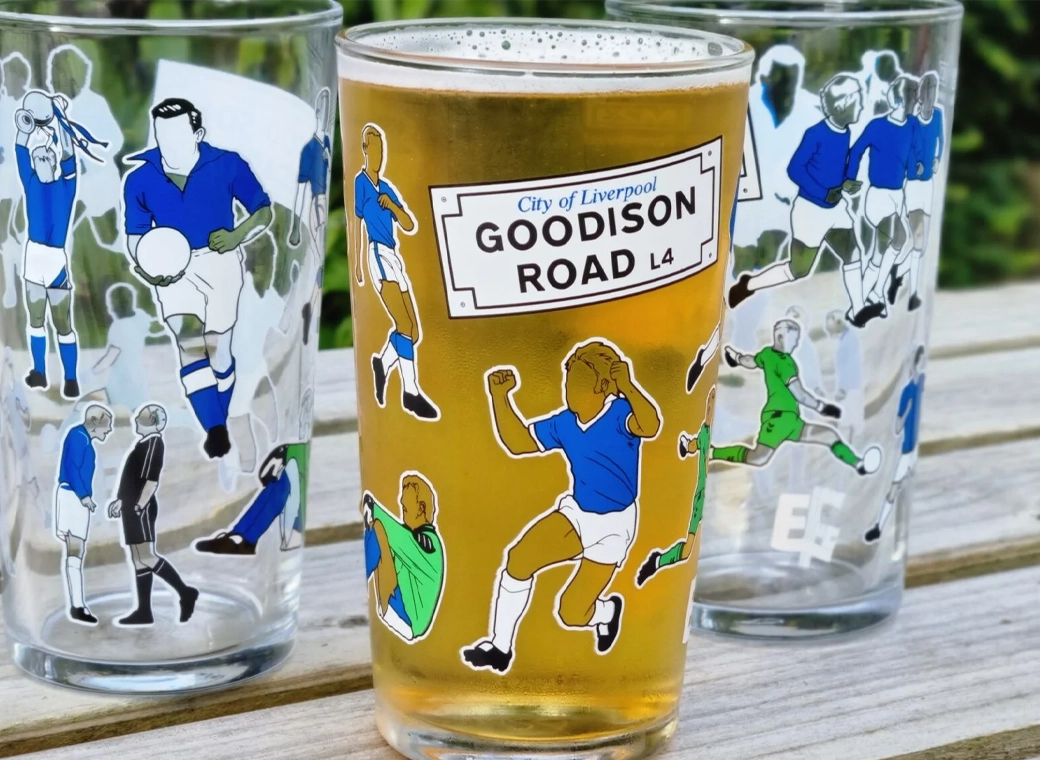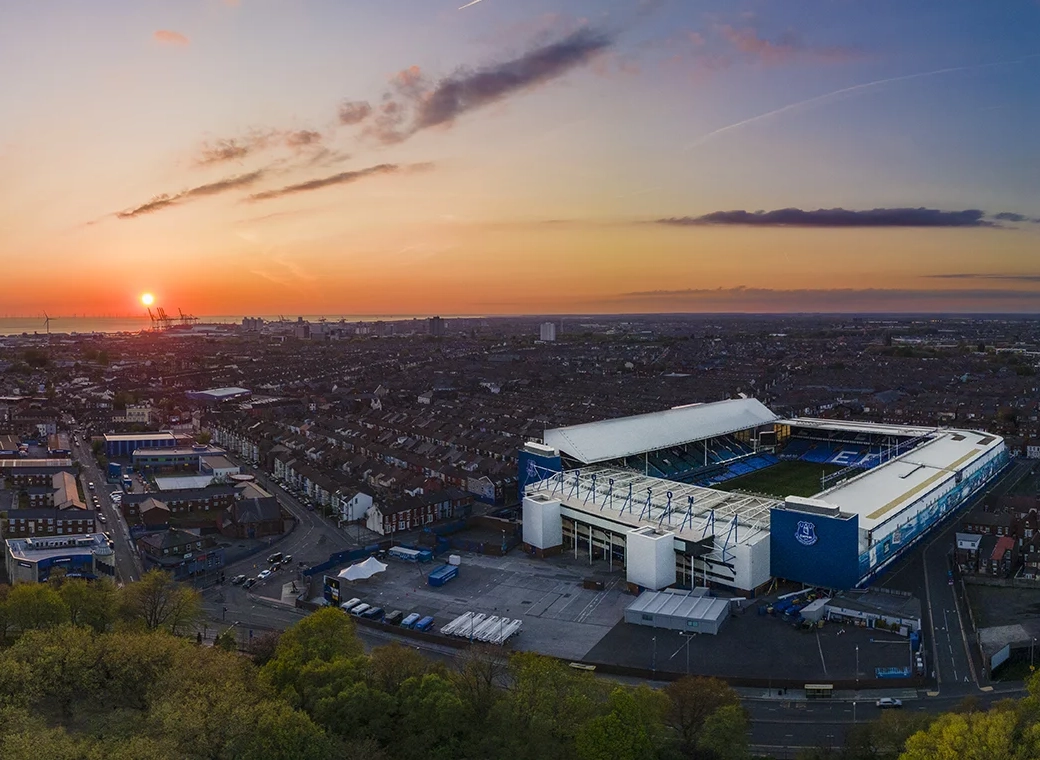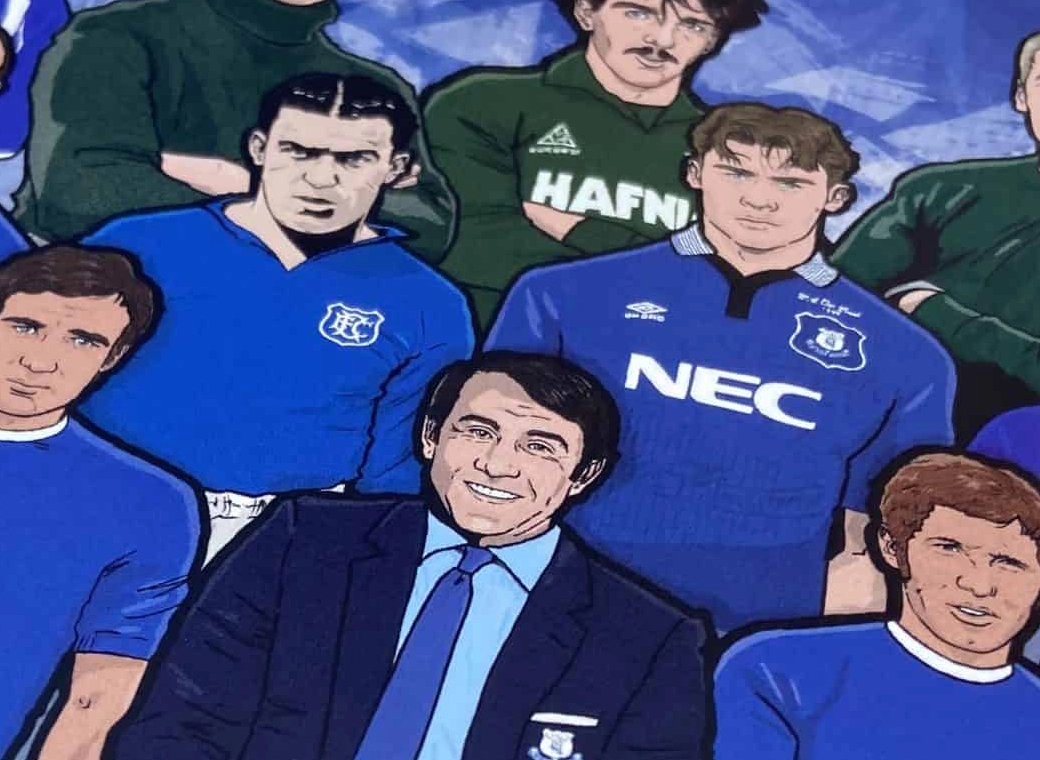Game of the Day: Everton 1-0 Man Utd, 2005 via Everton Arent We
In February 1995, Duncan Ferguson rose to power a header into the Gwladys Street goal. That header gave Everton a precious 1-0 win over Manchester United. A mere 122 months later, the Blues were once more looking for three points against the Red Devils. Again, Everton’s abrasive, evergreen talisman came up with the goods. The 2004/05 season would not end with silverware, as the campaign a decade previously did, but with a different kind of success. That famous Goodison night all but sealed it.
The season began with a major blow; as well as Tomasz Radzinski deciding Fulham’s prospects were better than Everton’s, Alex Ferguson struck a deal to bring the Blues’ shining star, Wayne Rooney, to Old Trafford. Everton had finished one place above the relegation zone and were expected to have a real fight on their hands to avoid playing in the second tier for the first time in 50 years. Once Bill Kenwright stopped blubbing and put the phone down, Everton began looking to rebuild.
David Moyes was able to clear plenty of deadwood that summer – Niclas Alexandersson and Tobias Linderoth departed, as did Paul Gerrard, Steve Simonsen, Scot Gemmill and an ageing David Unsworth. Two keepers left but none came in, thanks to the revelation that was 37-year-old Nigel Martyn, who had signed in 2003. Everton parted with £450,000 to bring Marcus Bent in from Ipswich, and after Millwall’s impressive FA Cup run, Moyes snared one of their stars, Australian midfielder Tim Cahill. Oh, and Eddy Bosnar arrived too. But never mind.

The unfancied Toffees won seven of their first 10 league games, and were suddenly part of the race for the top four. Thomas Gravesen left for Real Madrid in January, but Everton responded with the £6 million signing of James Beattie and the loan capture of Real Sociedad’s Mikel Arteta. Then came the wobble. Everton lost five games in six, including a meek exit from the FA Cup at home to eventual runners-up United. But the Blues bounced back with a 4-0 thrashing of Crystal Palace, including a record-breaking goal for 16-year-old James Vaughan.
They next faced a United side headed for a rare trophy-less campaign. The Red Devils lost the Community Shield final against Arsenal at the start of the season; they would lose again, same place, same opponents, in the FA Cup final to neatly bookend things. AC Milan knocked them out of the Champions League, while Chelsea halted their League Cup progress. Jose Mourinho’s cash-fuelled side romped to the Premier League title, and second-place Arsenal were well clear. They came to Goodison knowing third was most likely their lot, but there were still five fixtures left to reel the Gunners in, if Everton could be put away.
Everton’s last Premier League win over United had come as a result of that famous Ferguson header a full ten years before the two sides met at Goodison. Victory under the floodlights would mean fourth place was theirs for the taking.
David Moyes knew that Everton needed two things: blood and thunder. Ferguson started ahead of £6 million man Beattie, with Bent and Cahill – Everton’s top league scorer, with nine goals – providing the support. Arteta, Kevin Kilbane and Lee Carsley completed the midfield, with Steve Watson, David Weir, Joseph Yobo and Tony Hibbert lining up in a misshapen defence. Having no left-back to deal with Cristiano Ronaldo was a worry, but the main threat was the United front two, Rooney and Ruud van Nistelrooy. The plan was not to outthink the potent United side, but to outfight them. Moyes’ hope was that Goodison Park would be at its feral, snarling best.
And it was.
When Howard Kendall spoke of the Gwladys Street sucking the ball into the net, it was taken as metaphor, as a turn of phrase to indicate the usefulness of a home crowd baying for goals. But there’s a magic to Goodison under the floodlights. When the sky darkens and artificial illumination casts a gang of shadows around each player under its steady glare, when a long day of anticipation, tension and good ale culminate in 90 minutes of action, when so-called superstars swagger into L4 ready to be taken down a peg or two, the Goodison Roar splits the night. On such sacred occasions, it is unwise to bet against the force of the Gwladys really sucking the ball in.

The stakes at kick-off were high, not least considering Liverpool had kicked off 15 minutes earlier against Portsmouth, and Fernando Morientes had given the Reds the lead. If Liverpool were to hang on and Everton were to lose, the two sides would swap places in the league. In the end, the Reds’ victory over Pompey was immaterial. But at the time, it was another vital catalyst that ignited the Goodison cauldron.
Nobody enjoys a good tackle quite like the Goodison faithful. When the crowd is riled and ready, a meaty challenge is cheered more raucously than some sides’ fans welcome goals. Three minutes in, Carsley clattered Ronaldo – exactly what was needed. The fact no free-kick was given added some gloss. Arteta was next to attract Phil Dowd’s attention, colliding with Gabriel Heinze, before Roy Keane responded in a way only Roy Keane would, by cleaning out Cahill.
It was pantomime villain Rooney who mustered the first effort on target, but Martyn was more than equal to it. Everton began to pile forward, the long balls directed onto the head of Ferguson unnerving the none-too-burly United back line of Gary Neville, Rio Ferdinand, Wes Brown and Heinze. But, bar a hideously shanked Carsley volley, the pressure was not translating into shots on Tim Howard’s goal. Bereft of a first-choice left-back, Everton looked very much at Ronaldo’s mercy, but United were suffering a severe lack of a final ball.
It was the hosts who came closest to opening the scoring in the first half. A free kick headed into the danger zone by Yobo caused havoc among the United ranks. Cahill attempted an overhead kick, and only Ferdinand’s last-ditch intervention on the line prevented a spectacular opener. Bent then fired an effort over the bar, before Martyn smothered a Ronaldo strike.
Grit, aggression, mistimed challenges and a dearth of shots. “You just don’t get games like this on the continent”, Niall Quinn cooed. No wonder Sky would set about making more of an effort to broadcast La Liga games.
The second half began with Cahill’s re-entry delayed by the Australian vomiting on the sideline. United almost provided a sickener for the 35,000 plus Evertonians a few minutes into the half, a superb Martyn stop denying Paul Scholes after a dinked Rooney pass had set the ginger dynamo clear of Weir and Yobo.
Ferguson was then involved three times in fairly quick succession. First, the Scot barged into Howard as the away keeper went to throw the ball. Then a mistimed tackle on Darren Fletcher earned him a booking. The third involvement came in a moment any Evertonian at least 20 years old will still cherish to this day.
Arteta lined up a free-kick on the left wing, and whipped in a sumptuous inswinging ball. The United defence had done their job well, with the exception of Ferdinand, who had somehow lost the lumbering Ferguson. Everton’s hero of the hour stooped and, as if it were ’95 all over again, stormed off on a victory lap after grabbing the all-important goal. Goodison shook. United were shaken.

The atmosphere was Goodison Park at its deafening best. Intriguingly, whereas before a ball had been readily provided for every throw-in and corner, every spare had vanished, meaning play was taking a lot longer to restart. The visitors took control of the possession but could not wrestle from their hosts control of the game. Tempers began to flare, and things came to a head with the seemingly mediocre introduction of Mickael Silvestre in place of Brown. Gary Neville had called for the only ball available to him in order to take a throw-in, but the home fans were in no rush. Having finally got the ball back, Neville opted to boot it into the front row. Across came police officers, and then Phil Dowd. The police had nothing to fear. Evertonians in Neville’s firing line were too busy cheering the right-back’s solemn trudge down the tunnel after Dowd produced the red card.
United continued to come forward in numbers, but Everton valiantly held them off. Ronaldo took a tumble in the penalty area, Dowd blew the whistle…and the Portuguese winger was booked for diving – as he had been in United’s last outing, a defeat to Norwich. Luckily, he grew out of all that play-acting stuff. Scholes blew a pair of good chances. Hibbert cleared off the line from Ferdinand’s header. The ball came to van Nistelrooy eight yards out, and the Dutchman kicked air.
There was time for one more nail in the United coffin before full time. Scholes, poor all night, took a wild swing at Kilbane. A second booking meant the midfielder would trudge off a few moments before the nine dejected team-mates who remained on the field.
Dowd called time on a game that, despite a lack of goals, was a recent classic in its own right. Tense from the first whistle to the last, with more thunderous conflict than a Michael Bay movie, there was a battle at Goodison Park that night in 2005. And, as if from a movie script, Duncan Ferguson appeared in the right place at the right time, as he had ten years before, and sealed a priceless victory. They don’t write them like that anymore.
Read Full Article
Continue reading...


















